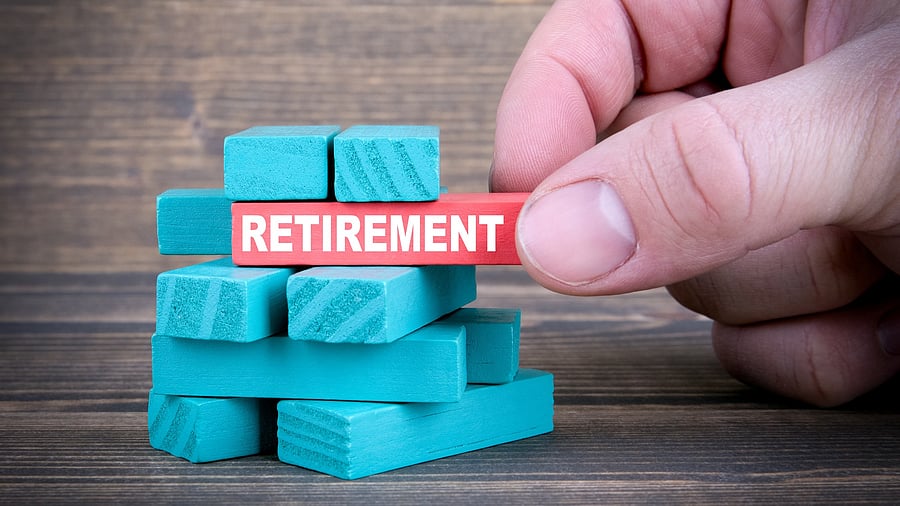
Representative image showing the word 'retirement'.
Credit: iStock Photo
For the first time since 1950s, China has implemented major changes to its retirement policy and is all set to increase the retirement age of its working population from January 1.
Under the new policy, the retirement age for men will be up from 60 to 63. For women, in white collar jobs it has been raised to 58 (from 55) and in blue collar jobs to 55 (from 50). According to Wang Xiaoping, minister of human resources and social security, “the adjustment is based on the current population structure, people’s improving health condition and the public’s concerns of a relative lack of flexibly in arranging their working and retiring lives”. The policy was approved by the Standing Committee of the 14th National People’s Congress.
In addition to late retirement, from 2030, the Chinese workforce will also have to make major contributions to their pension funds, and will have to do this mandatorily for 20 years to even access the pensions. They can also not retire before the set age limit.
Such actions were quite expected when China’s birth rate continued to decline for 2023 as well. China has been on the cusp of a demographic challenge and even after major urging by the Chinese Communist Party (CCP) and Xi Jinping, there has been no increase in the birth rates.
While addressing the All China Women's Federation, Xi urged the women of China to “actively cultivate a new culture of marriage and childbearing and strengthen guidance on young people's view on marriage, childbirth and family”. The statement underscored the challenge which reducing population poses for the CCP, and how it is unequipped to address this solely by making policy changes without the support of the people.
The cost of bearing and raising children is too high in China today. This coupled with decades of the ‘one-child policy’ further changed the structure of Chinese society. Even after the abolition of the policy in 2016 and replacing it with a two- and then a three-child policy, there has been no major progress in birth numbers. China had also announced that it will not be participating in intercountry adoptions any more.
The change in the retirement age is also an indication that the State finds itself incapable of managing and caring for the rapidly ageing population. Some reports suggest that in the last two years, 22,000 kindergartens have closed, and some have been replaced with old-age homes. This also calls for major investments in healthcare and caregiving.
The challenges are further aggravated as a report by the Chinese Academy of Social Sciences (CASS) predicts that the Chinese pension fund may empty by 2035. Figures indicate that the elderly make up ~20% of the total population and will make up 50% of the population by 2050, thus making China a ‘super-aged society’. Thus, the lower the workforce the lower the contribution to the retirement funds.
The decision has faced major flak from the citizens. One of the most viral Internet memes after the announcement says, “When I was born they said there were too many; when I gave birth they said there were too few; when I wanted to work they said I was too old; and when I want to retire they say I’m too young”. This summarises the feelings of the Chinese people. This, coupled with the rising unemployment, makes matters further grim for the job-seeking younger generation in China today. China’s unemployment rate for people aged 16-24 hit 17% in August.
The Chinese economy has also been facing a slowdown and the government’s agenda to push for increasing consumption has not prompted any positive indication. The idea for dual circulation as well as Xi’s calls to upgrade appliances and cars with the most latest models have failed to push consumption levels.
The challenges which Beijing is facing are not new. Other developed economies like France and the United States are also looking at ways to revamp their retirement policies. However, the major issue with China is the top-down process of policy implementation. One cannot deny the fact that there has been an increase in the life expectancy of the Chinese people, but these new reforms underscore the fact that the only route left for the CCP was one where it forced change on people. The calls for more births and consumption have not found major buyers. Change in the retirement policy appears to be the last option left for the CCP.
However, one cannot shake the notion that this will lead to major unrest and protests within the society which can directly challenge the legitimacy of the CCP. China is getting older before it gets any richer, and it is still reeling under the effects of the Covid-19 and global and domestic economic slowdown. But can the CCP successfully manage to brace a major public outcry as the core goal has been to achieve stability, and make China a moderately prosperous economy?
These policies underscore the argument that it may take China longer than what Xi hopes to become a prosperous economy. It appears that Xi is trying to prevent the sinking of the Chinese ship by plugging one hole at a time, missing the point that the economic and social policies now call for an urgent rehaul.
Gunjan Singh is Associate Professor, OP Jindal Global University.
(Disclaimer: The views expressed above are the author's own. They do not necessarily reflect the views of DH).